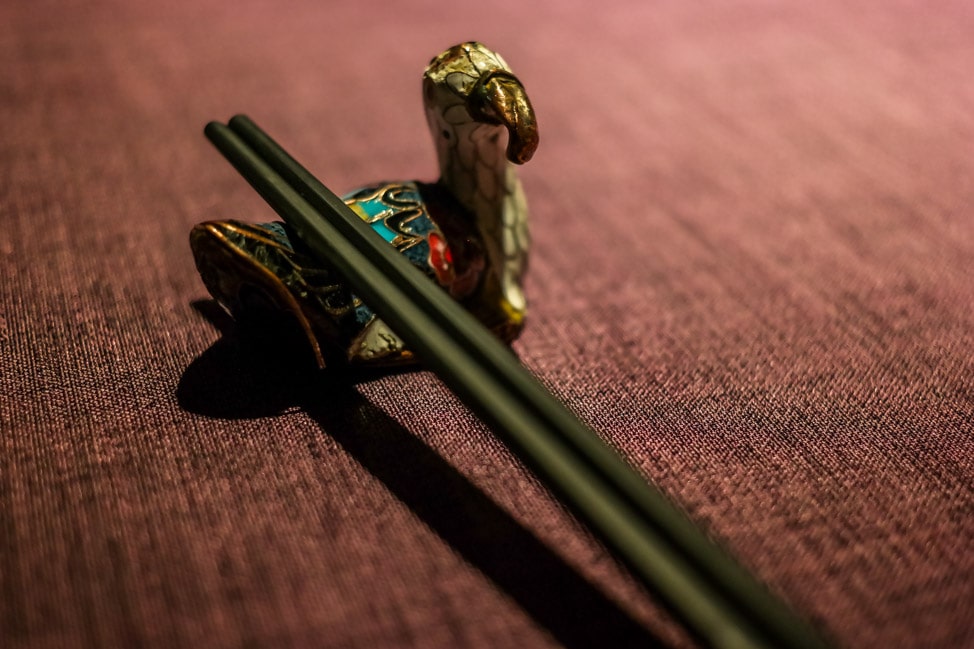Is there a better place for Peking duck than Beijing?
This legendary dish originated in Beijing in the 14th century (when Beijing was referred to as Peking, hence the name) as a dish for the Emperor of China in the Yuan Dynasty where it became a staple of the imperial kitchen. The traditional process is laborious, involving inserting a air compressor between the skin and meat of the duck to separate them, blanching the duck for a short period of time, hanging the duck to dry for 24 hours, then roasting it in a wood-fired oven. It takes days to properly prepare a duck. Clearly, those chefs in the Emperor’s kitchens had a lot of time to experiment.
Today in Beijing, there are two camps. One favors the traditional-style duck in old school joints, where the birds are cooked at a higher temperature in the final step, achieving a mahogany exterior but retaining more of the natural fat of the duck. The new school places cook the ducks for longer at a lower temperature, allowing most of the fat to render and the skin to become crackly crisp.
I have sampled the traditional style at Deyuan Roast Duck (德缘烤鸭店) in the Qianmen neighorhood, a cheap, local favorite where the whole duck goes for only RMB158 ($22.70). The duck was delicious, but it still retained a thick layer of un-rendered fat. Not exactly my favorite, though it was needed after a day spent hiking on the Great Wall. I did enjoy the company of a rowdy group of local patrons, and the people watching was fantastic.
On a more recent visit to Beijing, I wanted to sample a modern Beijing version of the famous roast duck. There are quite a few options, including Dadong, one of the originators of the new school duck that has expanded around Beijing and even as far as New York City. After extensive research (kind of my speciality), I settled on Duck de Chine. It’s a more posh setting without much of local flair of places like Deyuan, but offers one of the highest quality ducks (with prices to match).
Duck de Chine is set in a large scale retail/restaurant complex called 1949 – The Hidden City, a neo-industrial dining and entertainment area. The exterior included imposing statues and a entrance guarded by men in black suits with ear pieces. We entered under a sign that I could not decipher, but I was reassured that this was in fact the entrance to Duck de Chine.
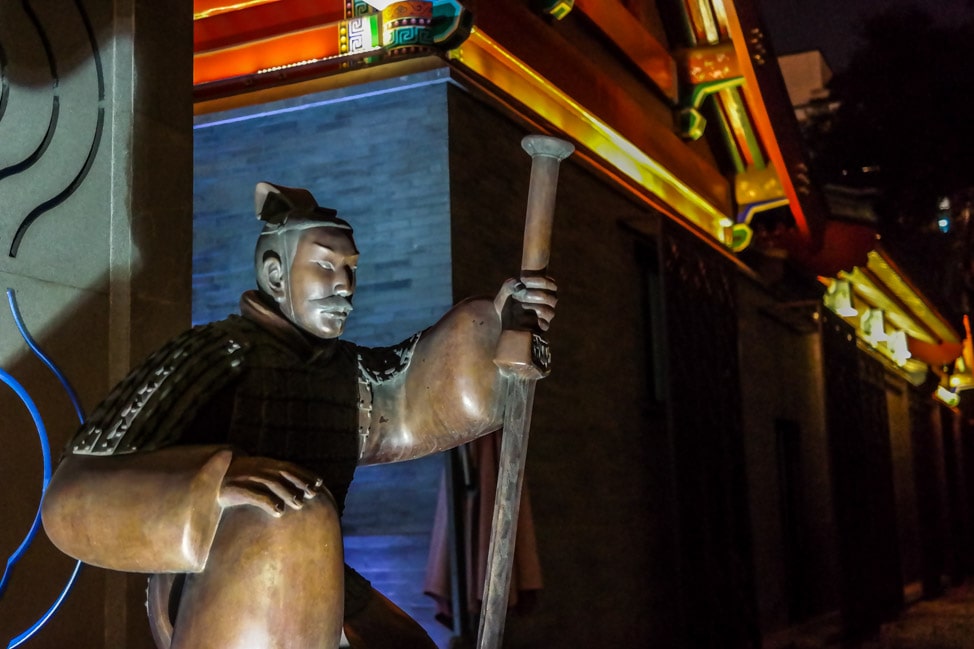
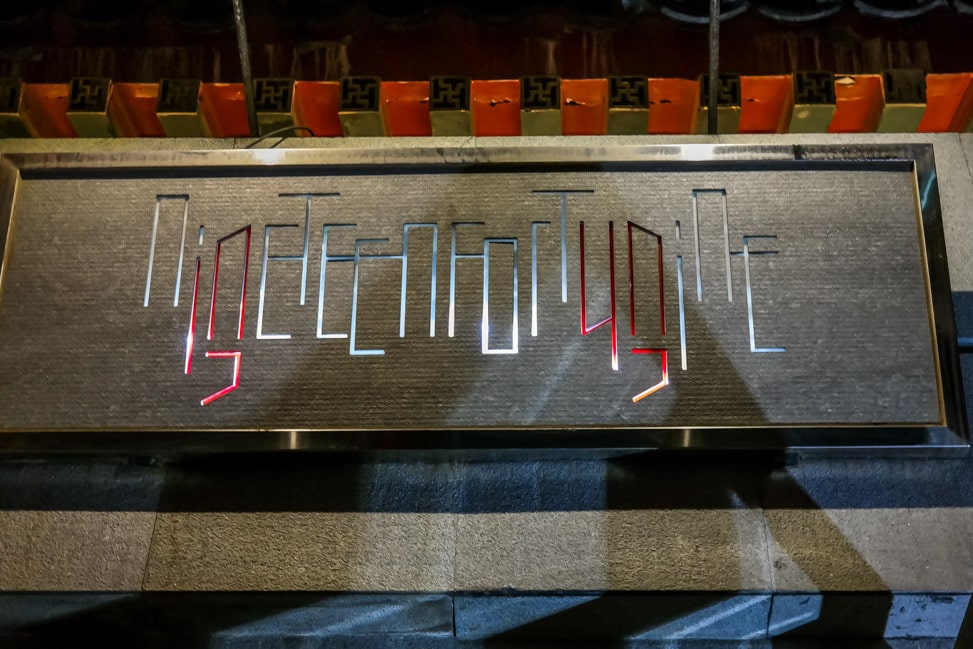
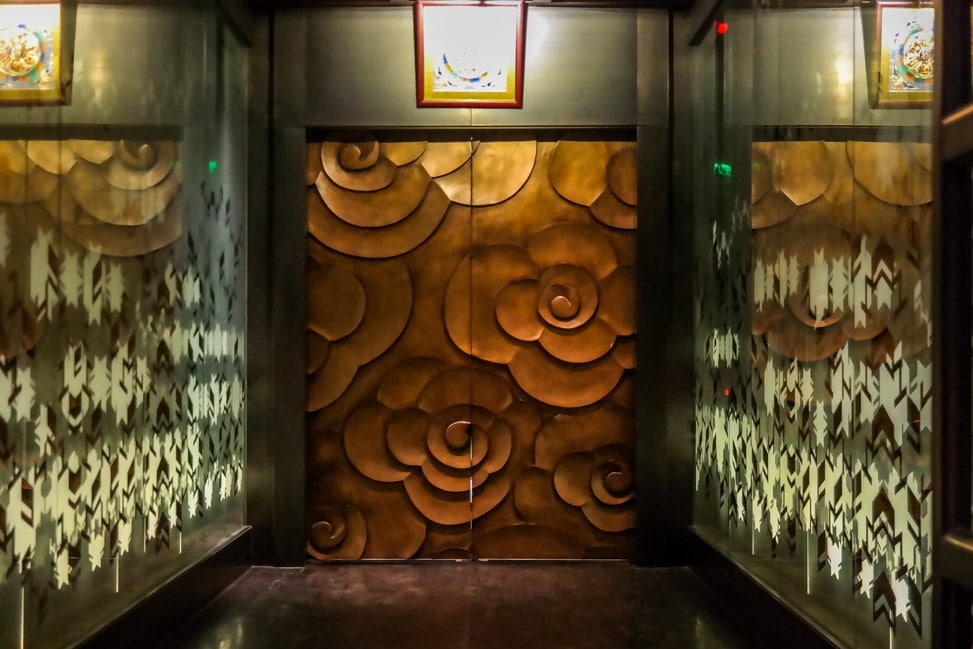
The long corridor led to huge wooden doors that opened automatically as we approached and were met by a host. We were escorted to our table, set alongside a wall of windows overlooking a central courtyard and the open kitchen, complete with the wood-fired oven and a row of hanging ducks, waiting for their turn in the oven.
Julie and I were joined by her sister and a work colleague, who fell for the classic restaurant move of only asking if we wanted “still or sparkling?” to which they replied “still.” Minutes later, our server returned with a full size bottle of Voss water. It was that kind of place. I quickly refused, and just asked for “bing shui.” I would later come to find out that the fancy bottled water cost ¥85 ($12). This was not going to be a cheap meal.
Side Note: In my restaurant management days, we used this method in our high end restaurants. We would have tap water available, but servers were instructed to say “still, tap, or sparkling” because the typical diner remembers the first and last thing a server says. It leads to higher check averages and the profit margin on water is, uhhh, let’s say… generous. Tricks of the trade, my friends. Cruel, but effective.
Since I had organized this dinner I was tasked with ordering. Duck de Chine has an extensive menu (frankly, almost every Chinese restaurant does, one of the few similarities between Chinese restaurants in China and the US) with dishes from a few different regions of China, especially Cantonese. There were a few fusion twists as well, including duck tacos. Needless to say, we stayed away from any fusion dishes.
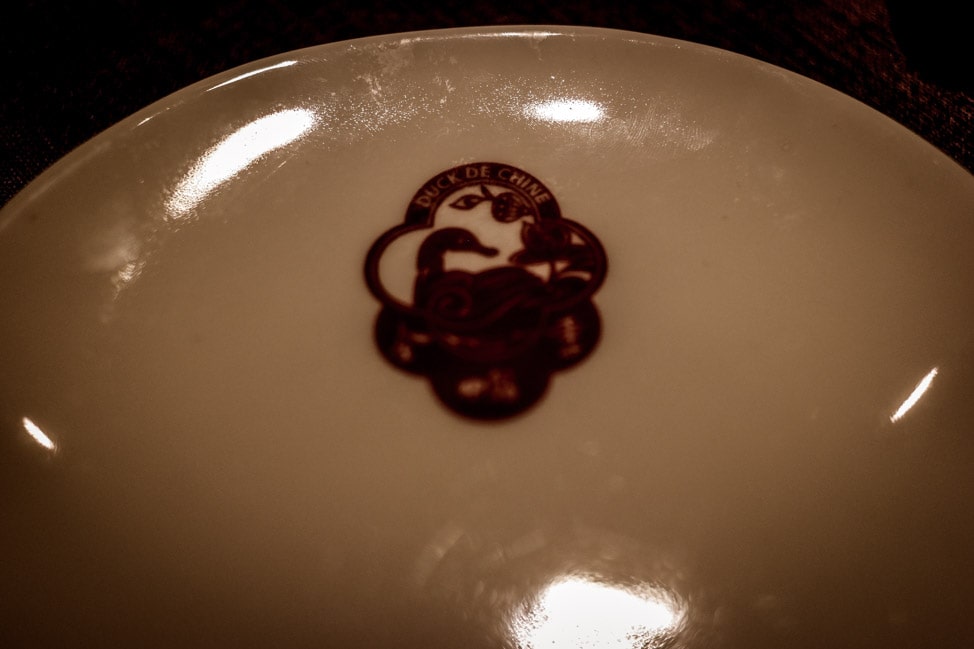
In classic fashion, I over ordered – a specialty of mine that Julie has a particular disdain for – but I wanted Julie’s sister and work colleague to experience a range of dishes. Within minutes, dishes started hitting our table, and would continue to do so for the next hour or so. Oops.
We started with black fungus with lily bulbs and bitter melon, fried tofu cubes, and bean curd wrapped mushroom roll. Everything was delicious, especially the black fungus, which is called wood-ear fungus in the US. It has a unique texture and a ton of earthy flavor. The fried tofu is a staple, a crispy exterior leading to what Julie’s sister described as a “perfectly squishy” interior. The bean curd roll was light and delicate and a nice way to begin.
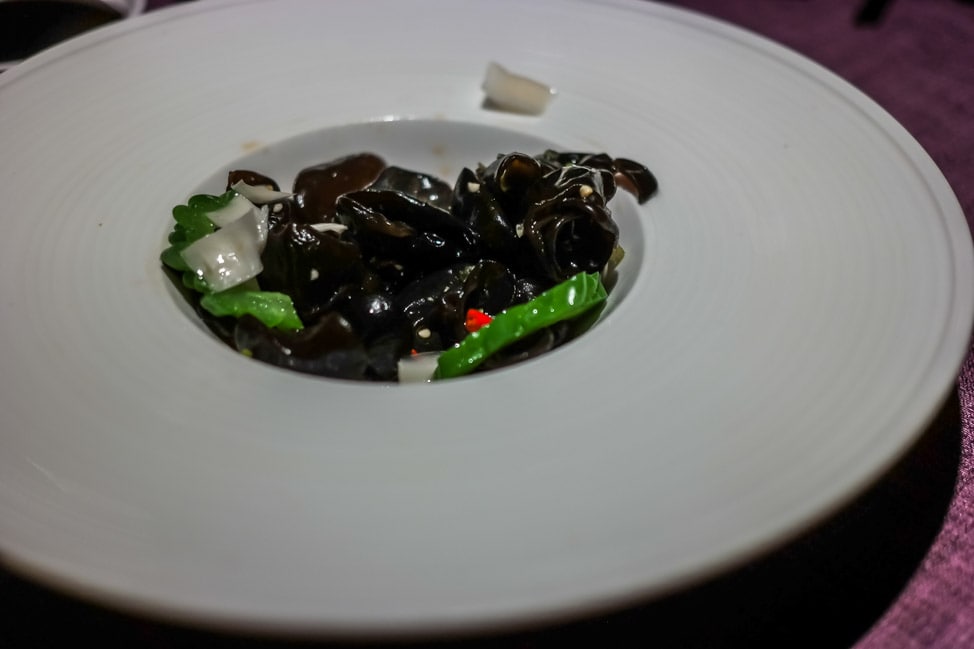
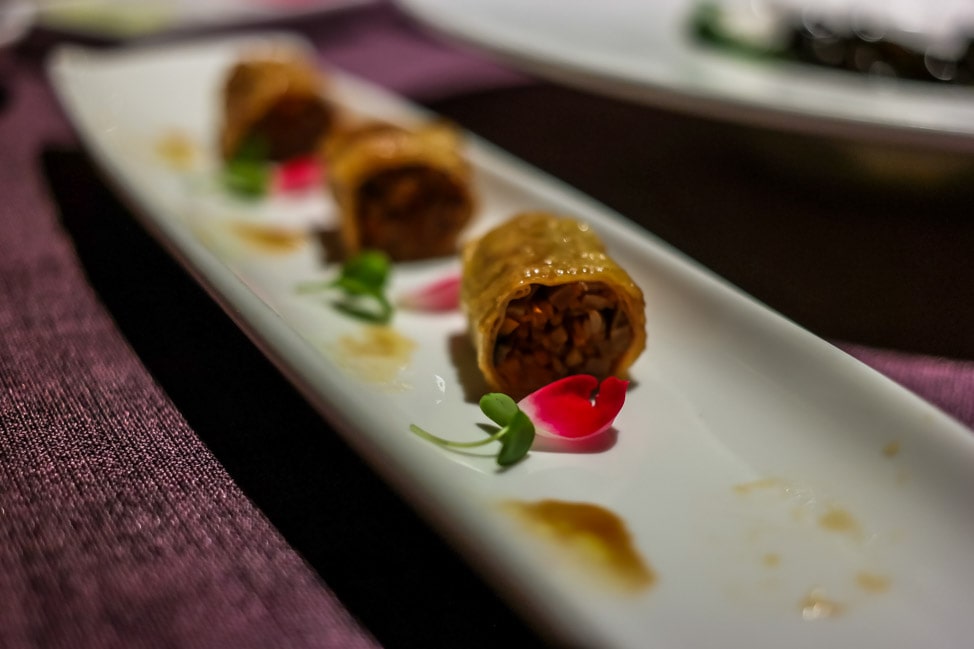
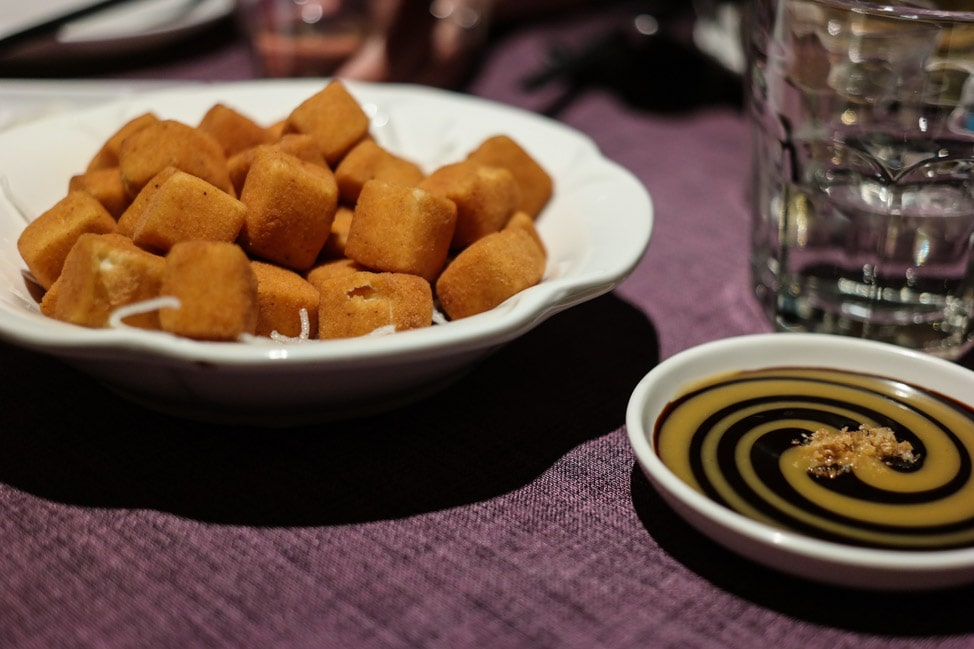
For our duck, Duck de Chine has a unique table-side trick I’ve never seen before. They present a dish of hoisin sauce for each person, and an option to add sesame paste or peanut sauce. They add one or the other in a ‘+’ pattern over the hoisin, and then grab the dish and swirl it on the table. It results in this perfect spiral, garnished with a spoon of crispy garlic.
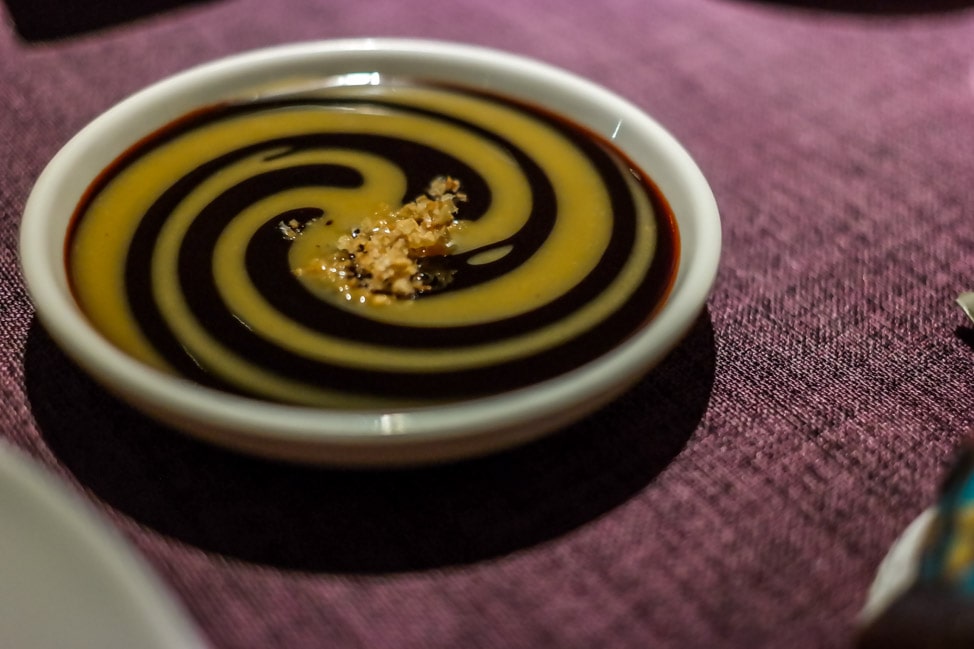
A chef came out and presented our duck – ¥358 ($51.40) for whole duck and all the accompaniments – perfectly golden brown, before carving it in front of us. With impressive precision, he removed all of the skin in perfect sheets before carving the meat around the breast and legs. He arranged the meat on special white porcelain duck platters and topped with sliced pieces of the lacquered skin.
We had the typical arrangement of paper thin pancakes, cucumber, scallion, and radish, with a bowl of white sugar for dipping the skin. Frankly, my highlight of eating duck is dipping the crispy skin into the sugar. The mixture of sweet and fat is perfection.
The duck itself was tasty, but a tad overcooked. The downside of the modern-style Peking duck is that it requires longer in the oven to render all the fat, which leads to slightly tougher meat. On the flip side, there was not single large chunk of fat left on the bird. It tasted lean, and flavorful.
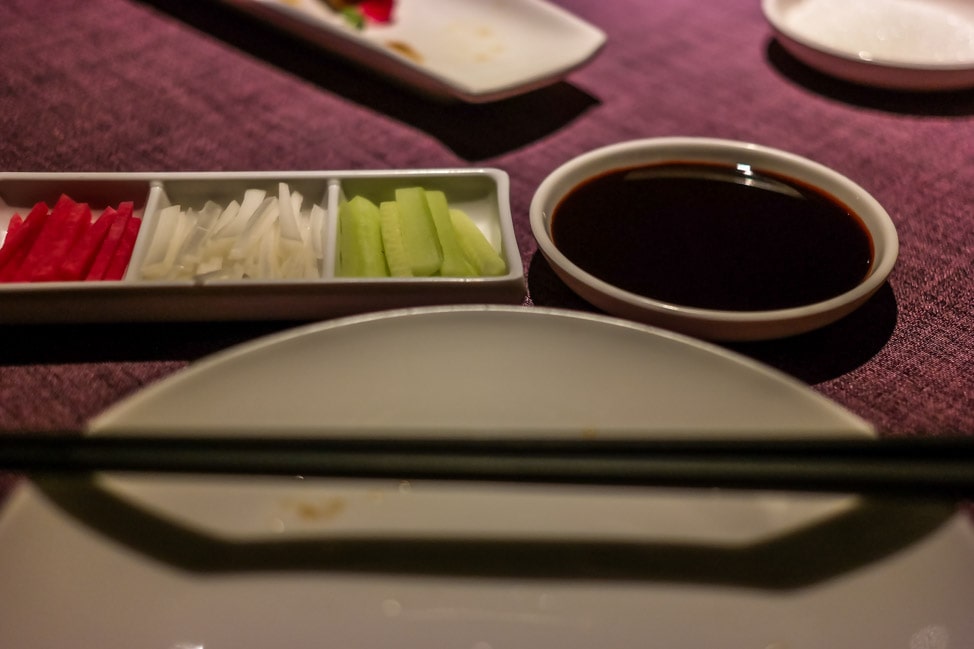
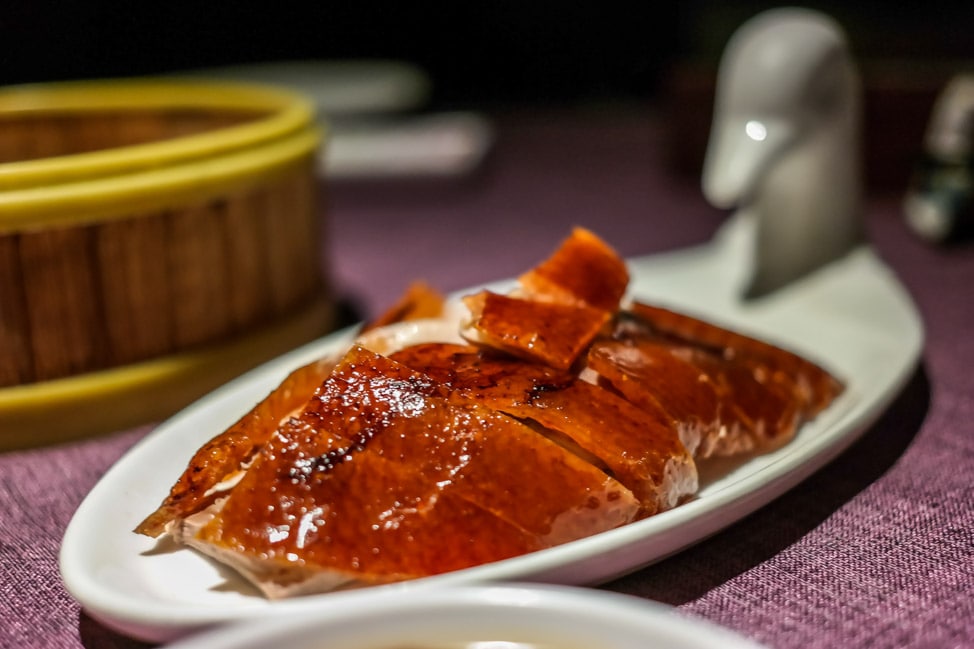
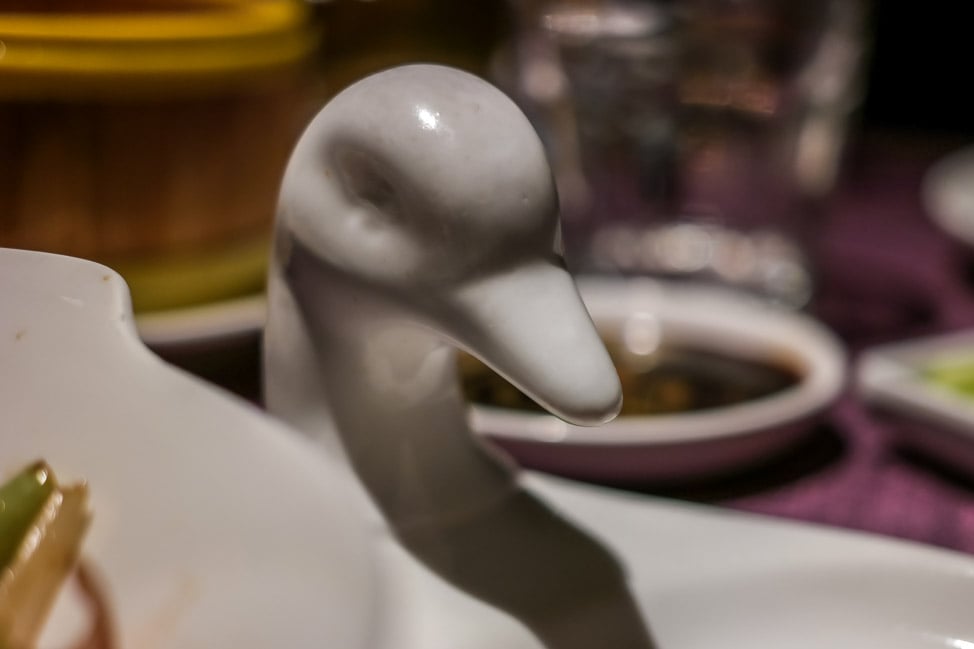
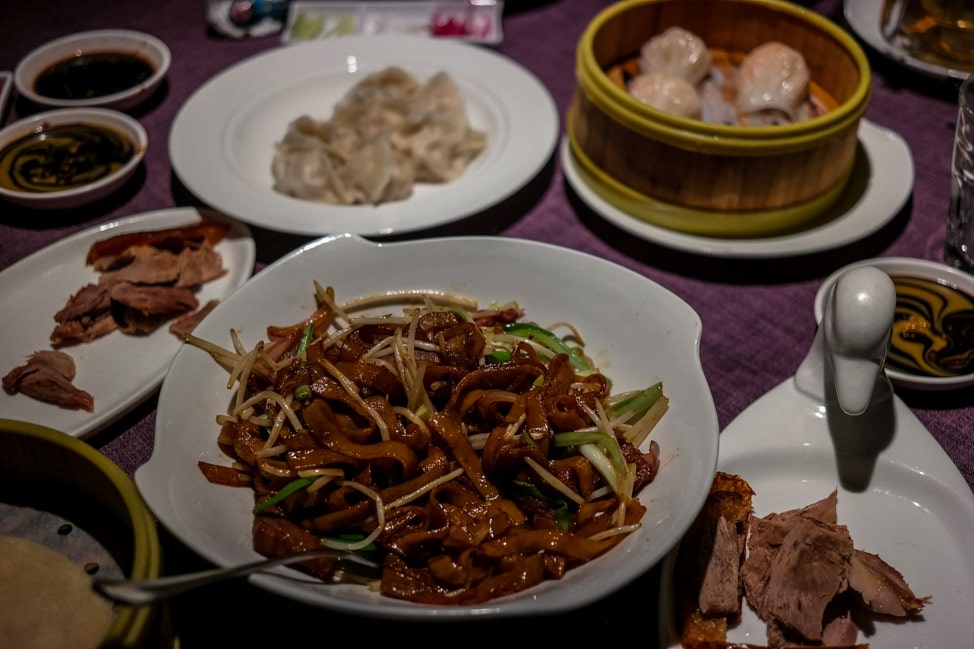
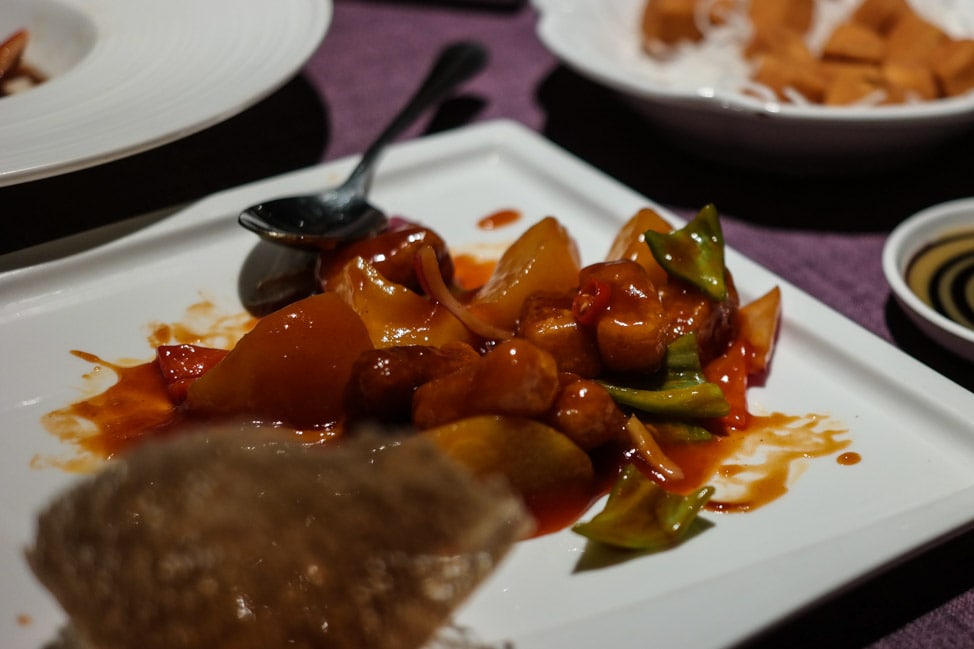
The flurry of dishes continued, including sweet and sour pork (crazy, crazy sweet and the most “American Chinese” dish on the menu), rice noodles with beef, and a variety of dumplings, including a steamed pork version, and the Cantonese classic, har gau, stuffed with whole shrimp in a translucent skin. We picked at the last round of dishes. Even when I’m full, I can’t pass up a few bites of stir-fried rice noodles or dumplings.
We were way to full to even consider finishing all of the food. We waved our white flag and I asked for the bill.
The total came to almost ¥1,100 ($153 or $39/person), a ton of money to spend on dinner in Beijing. We only drank tea with dinner, so the bill could have easily doubled if we decided to partake in the wine list.
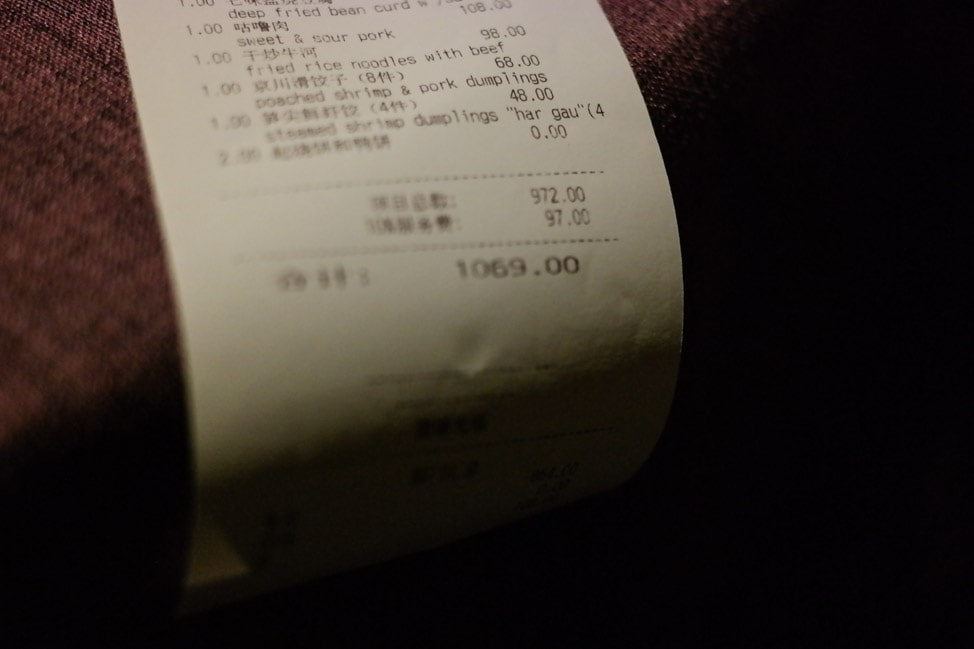
Conclusion
Was our experience at Duck de Chine worth it? Absolutely. The duck, while a bit overcooked, had no un-rendered fat and perfect skin. The other dishes were excellent and not terribly priced for an upscale restaurant. Better deals could be found all over the city, but the duck itself was a classic example of the leaner style. Is it the type of place I would go to regularly if I lived in Beijing? Probably not, but for a special occasion or impressing that out-of-town friend who feels “uncomfortable” about the more rustic options, it’s a great option for Peking duck in Beijing.
Want to see other options for Peking duck? Check out The Beijinger’s Top Five Peking Duck Restaurants and Timeout’s Best Peking Duck

